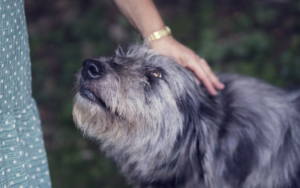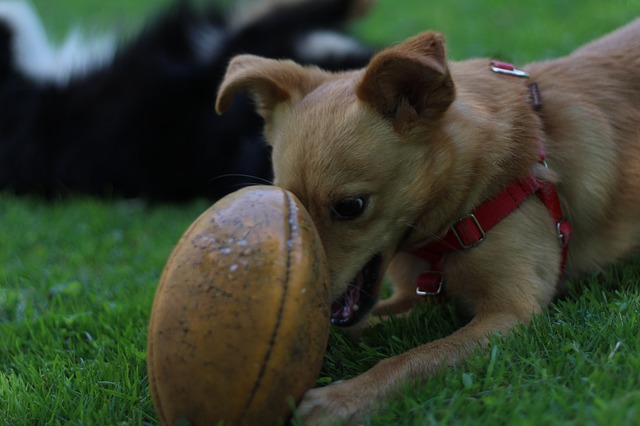
Puppies are often a first choice when it comes to rescuing a new family member, but mature dogs face a different kind of fate. They’re passed up for reasons like their size and looks, and many adopters decide against adopting adult dogs because they’re worried they won’t find that unbreakable bond all dog owners value.
This common misconception that adult dogs can’t bond as well as puppies is leaving countless animals stranded in shelters. It’s true adult dogs are often affected by past experiences, but most are waiting for the right person to show them how good life can be.

How long it takes to bond with an adult rescue dog will depend on several factors including the dog’s past experiences, their individual temperament, and their new owner’s effort to make a connection. It might take time, but there’s no such thing as a dog being too old to form an emotional relationship with a new person. Here are a few tips to help you build the foundation to an unbreakable bond with an adult rescue dog.
1. Be The Most Predictable Person
When a dog ends up at a shelter, their trust was broken at least once before. Whether it happened when they were given up by a previous family or an uncontrollable situation led to a heartbreaking separation, something happened to change the dog’s life. The randomness of that shift in circumstances taught the dog a lesson that the things and people they love aren’t always reliable. Their confidence in the good things has been shaken, and they need someone to alter their newly jaded perspective.
You can do this by showing your dog that no matter what, you’re there to stay. You need to show them that despite all of life’s unknowns, they can always count on you to be their permanent anchor to the real world.
Develop a daily routine that involves your dog as much as possible. Make them a part of everything you do, and keep your interactions consistent and predictable. With time, they’ll learn what to expect, and they’ll begin to trust you enough to form an emotional bond.

2. Commit to Obedience Training
Obedience training sounds like it’s all about the dog, but really, it’s about dog and owner learning to work together. It involves two-way communication that won’t work unless both ends of the leash are connecting with a joint effort. Mo-Kan Border Collie Rescue writes,
“Even when your dog seems like he pays good attention and obeys basic commands, an obedience class is the single best method to help new owners learn to communicate and bond with their dog.”
Obedience training is an opportunity for dog and handler to spend purposeful time together. The dog is motivated to interact with the owner, and the owner gives them 100% of their attention. When a dog is focused on a job, emotional barriers come down. As they continue to work with their owner, they’ll become more comfortable interacting.
3. Get Silly and Play

Sitting on the recliner while weakly tossing a tennis ball down the hallway is not the same thing as playing with your dog. They’re smart enough to know when they have your full attention and when you’re not committed to the game. Putting in the effort to get up, get active, and really play with your dog will go a long way. Playing is a dog’s chance to let loose and enjoy life. When you join in on their favorite game, they’ll start associating you with all their most positive emotions. Show them you care about their happiness, and you’ll start to see them do the same.
4. Focus on Touching and Talking
A recently adopted dog plopped down into a new environment with people they don’t know is bound to be stressed, anxious, and maybe even scared. It’s important to give them the space they need to adjust, but ignoring them isn’t the way to go. Gauge your actions based on your dog’s behavior and find a balance between giving them space and making them feel like part of the family.
Both touching and talking have positive effects on the mind of a dog. Animal Wellness Magazine says,
“Dogs don’t just tolerate human touch—most thrive on it. In fact, the way we touch our dogs profoundly impacts the way they view and interact with the world.”
A soft pat on the head before you set down their dinner, a belly rub as they lay on the floor, a casual scratch behind the ears while you’re doing chores—every touch is a type of unspoken reassurance. Casual touch is comforting and helps the dog get used to your presence.
At the same time, talking to your dog isn’t as crazy as non-dog people want you to believe. Studies show that talking to animals is beneficial for both humans and dogs.

5. Lose All Expectations
Whether you have shared an unbreakable bond with another dog or simply love the stories of dogs fully committed to their owners, now is the time to forget about those expectations. Every dog is an individual, and every relationship is unique. It’s not fair to compare what you have with a new rescue dog with whatever vision you have worked up in your mind. The disappointment you feel when things don’t work out exactly as you imagined will be an emotional blockade, keeping your new dog from feeling at home in your presence.
Some dogs are willing to hand over their whole heart after the first head scratch, but that doesn’t always happen. Adult rescues have learned hard lessons from difficult pasts, but that doesn’t make them any less deserving of love or any less willing to give it. All they need is time, patience, and compassion to feel safe enough to trust their hearts to a new owner.
H/T: Mo-Kan Border Collie Rescue, Animal Wellness Magazine
via Whisker Therapy